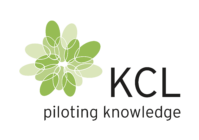Introduction
The cost of barrier coating in packaging varies based on several factors, including the type of materials used and the specific application requirements. Understanding these variables is essential for businesses looking to optimize packaging efficiency and cost-effectiveness. In this article, we will explore the factors influencing barrier coating costs, their impact on overall packaging expenses, and the potential benefits and comparisons among different types of coatings.
What factors influence the cost of barrier coating?
Several factors affect the cost of barrier coatings in packaging, starting with the choice of materials. Packaging materials, such as paper, plastic, or metal, require different types of coatings, each with distinct cost implications. For instance, high-performance coatings that provide superior moisture or oxygen barriers may be more expensive than basic options.
Additionally, the coating technology employed can significantly influence costs. Advanced technologies that offer precise application and superior adhesion might come at a premium. Production volume also plays a critical role; larger production runs often benefit from economies of scale, reducing the per-unit cost of barrier coating.
How does barrier coating impact the overall cost of packaging?
Barrier coatings can influence the overall cost of packaging by enhancing product protection, thus reducing the need for additional packaging layers. This can lead to immediate cost savings by minimizing material usage. In the long term, high-quality barrier coatings can extend the shelf life of products, reducing waste and loss due to spoilage.
However, it is important to weigh these benefits against the initial investment required for high-quality coatings. While they may increase upfront costs, the long-term financial implications, including potential savings on waste and improved product quality, can justify the investment.
What are the cost benefits of using barrier coatings?
The application of barrier coatings offers several cost benefits. One of the most significant advantages is the extension of product shelf life, which can reduce the frequency of product returns and losses due to spoilage. This not only saves costs but also improves customer satisfaction and brand reputation.
Moreover, barrier coatings can reduce material waste by enabling the use of thinner or less material-intensive packaging. This not only lowers the cost of packaging materials but also contributes to sustainability initiatives, which can be a valuable selling point for environmentally conscious consumers.
How do different types of barrier coatings compare in cost?
Different types of barrier coatings come with varying costs, influenced by their specific properties and applications. Traditional coatings, often made from petroleum-based materials, tend to be less expensive but may not offer the same environmental benefits as newer alternatives.
Biodegradable and recyclable barrier coatings, while typically more costly, provide added value by aligning with sustainability goals. These coatings can appeal to eco-conscious consumers and may justify the higher initial expenditure through enhanced brand perception and customer loyalty.
Conclusion
Understanding the cost dynamics of barrier coatings in packaging is crucial for businesses aiming to balance quality with cost-efficiency. By considering factors such as material choice, technology, and production volume, companies can make informed decisions that optimize packaging processes. While the initial cost of high-quality barrier coatings may be higher, the long-term benefits, including reduced waste and extended shelf life, can offer substantial financial advantages. For those considering barrier coatings, evaluating the type and application in line with business objectives can lead to more sustainable and cost-effective packaging solutions.
